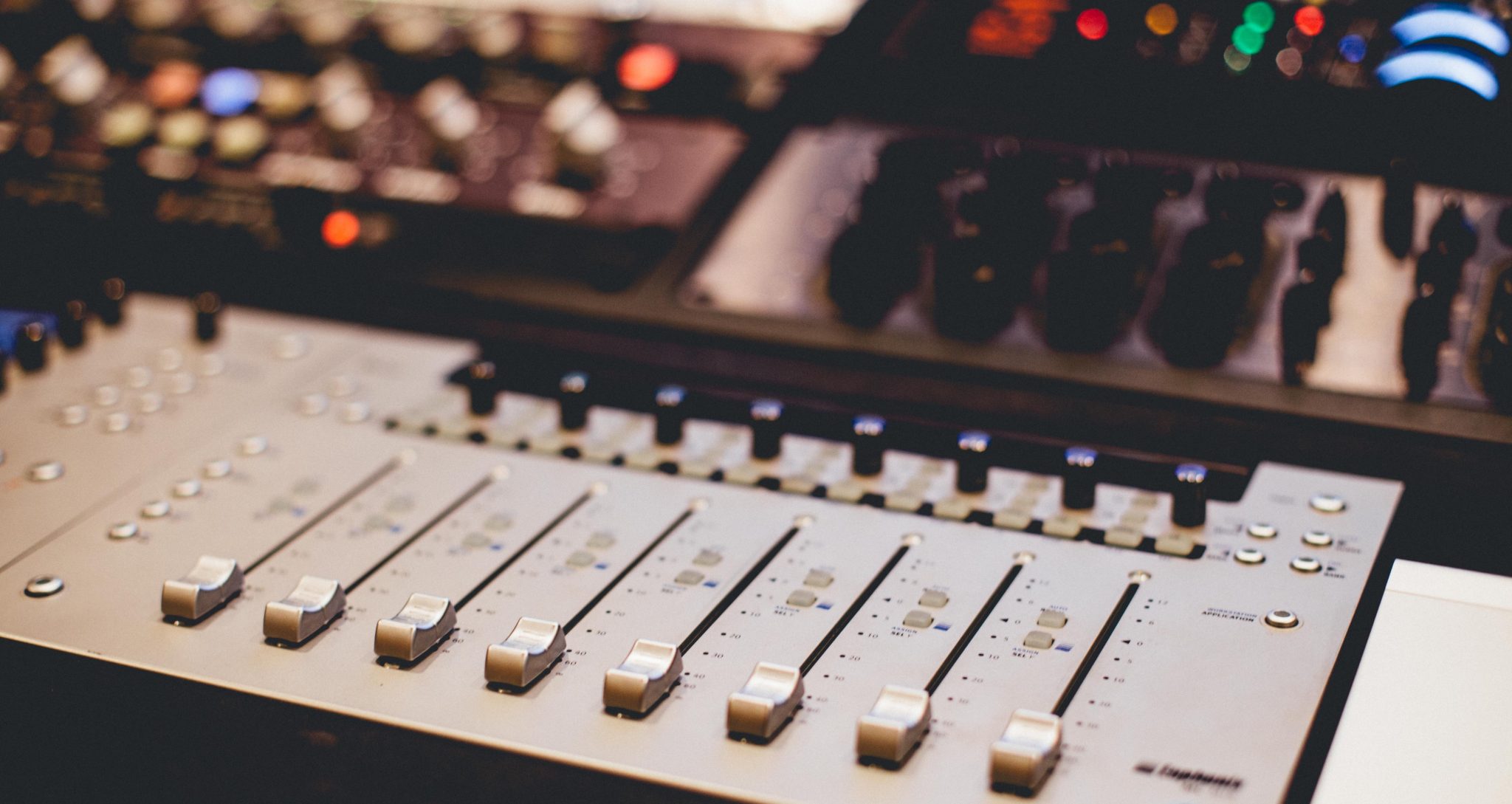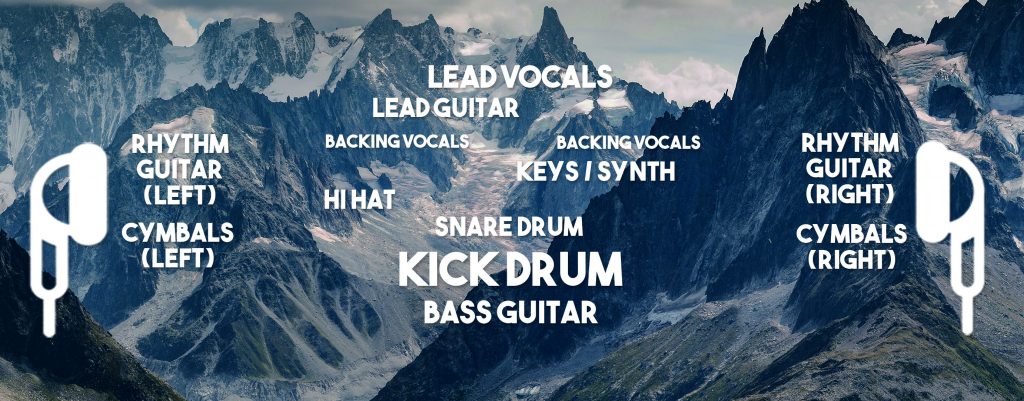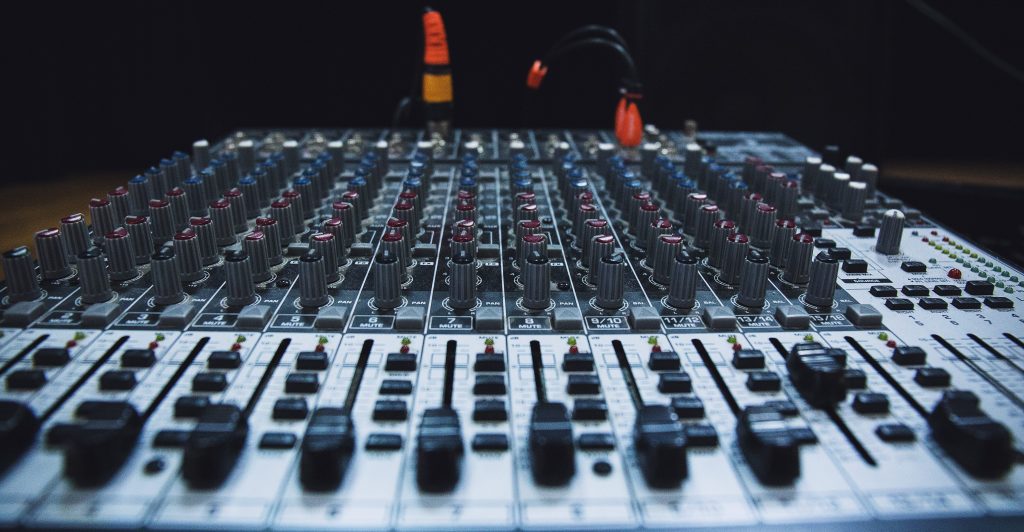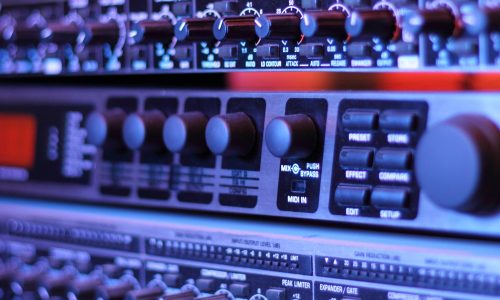
Mixing: The Basics
- Production
- 6th April 2018
- Lenny Bedford
Mixing can look very daunting, but as an emerging artist it pays to know a thing or two about it. Here's our guide to the basics of mixing!
The Stereo Field.
A lot goes into created a finished mix. One of the first things to consider is where everything fits together. This is also taken into account with what you record and what methods you use. For instance, two overhead microphones are used to record cymbals. This is because each one of those audio tracks will be panned over to each side to give the cymbals a wider feel. Panning is the ability to place different audio tracks in different spaces around the stereo field, EG. rhythm guitar in one ear, lead in the other, and then you can place things at any stage between complete left, and complete right to create a wide soundscape. When thinking about the Stereo Field, it’s important to visualise it as best you can. So we’ve done it for you! A standard stereo field for a rock song might typically ‘look’ like this:

Levels.
When you hear engineers talking about levels, they are talking about the volume of each audio track. Now, an inexperienced mind might say “We need everything as loud as possible”, but that is a bad frame of mind to be in. Each instrument plays a certain role in the mix, and it is very subjective and dependent on circumstance how loud each should be. As a rule of thumb, don’t have anything so loud that it sticks out, and make sure it all glues together as a full song. A common mistake that beginners make is to mix each instrument separately, and not pay attention to the full mix. Each ingredient has to work well together. It has been known to happen where one instrument does not sound so good on it’s own, but adds a lot to the mix. You wouldn’t scoff a handful of paprika on its own, but sprinkling it over some chips is divine.
Equalisation.
EQ is probably the most basic audio process that is involved in mixing. The basic principle of EQ (equalisation), is to adjust the individual frequencies of each sound in your mix to make it all glue together. For instance, if your bass guitar and kick drum are occupying the exact same frequencies, they will fight and fumble over each other, which will muddy your mix. Each instrument has its place to shine, and it is the job of the mixer to find that place. EQ is usually presented as a graph, which allows you drag each frequency band around in order to manipulate the sound.

Compression.
There is always a lot of confusion when it comes to compression. The short explanation is, it makes everything the same volume, so if you have a vocal track that goes from quiet whispering to screaming in the same take, it levels it all out and makes it (round about) the same volume. The confusion comes in here. A lot of people think that compression turns everything up, when in reality it takes the loudest parts of the track, and brings them down to lower levels. This drastically cleans up the dynamics of the track, and maintains consistency within each instrument. However, too much compression can result in some horrendous sounds, so please be gentle!
Basic FX.
Now it’s time to mess around with effects. This is the fun part. Perhaps the most basic audio effect is Reverb. Now, Reverb is a little different to Echo. Think of it like this, you are standing in the Grand Canyon, and you shout your name. Your name will bounce back within a second or two, and do this multiple times. That is an Echo. Now, imagine you are stood in an empty room with hard surfaces all around. You shout your name. The sound does bounce back, but it bounces back to your ears far faster, and does not give you a perceivable echo. It instead gives you must faster reflection of the sound, due to the distance between your mouth and the surface is bouncing off. Other basic effects include Chorus, which artificially double tracks the sound, (making it sound like a choir of sound, hence the name), and Delay, which repeats the sound as many times as you like.
So there you have it. This is not a fully fledged guide on how to mix, this is simply an introduction to the individual processes that go on within mixing, very handy for bedroom recording or throwing your two cents in while at the studio.

